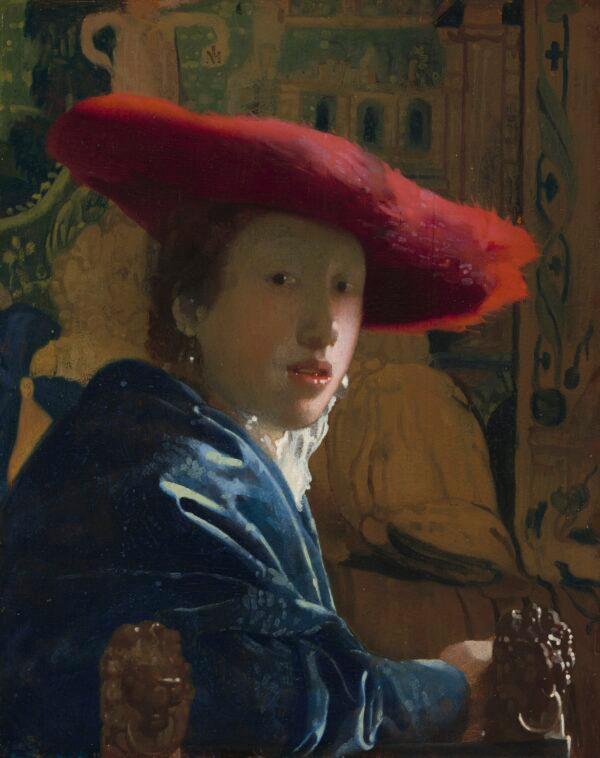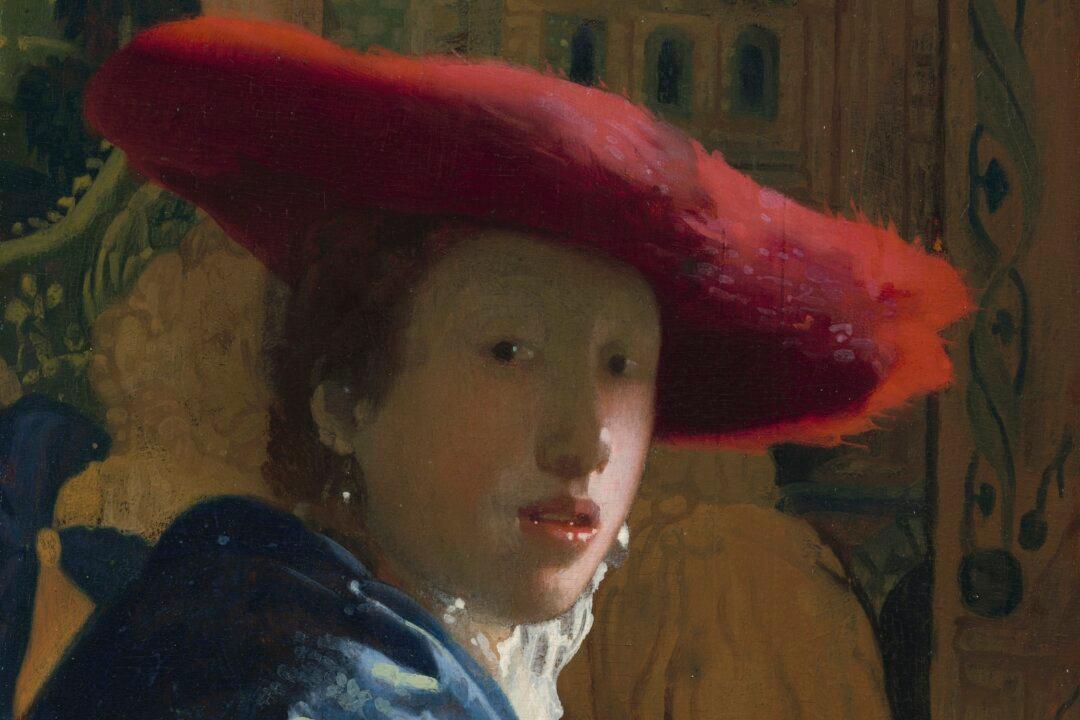Oh! If only the “Girl With the Red Hat” could speak. In Johannes Vermeer’s painting, she’s turned around in her chair, gazing directly at us. Natural light streams across the side of her face, highlighting her open mouth and that mischievous glint in her right eye, as if she’s known for centuries what curators, scientists, and researchers at the National Gallery of Art in Washington would discover: Vermeer had a studio, where he worked with assistants and taught students and apprentices.

“Girl With the Red Hat,” circa 1669, by Johannes Vermeer. Oil on panel; 9 inches by 7 1/16 inches. Andrew W. Mellon Collection; National Gallery of Art, Washington. National Gallery of Art, Washington






